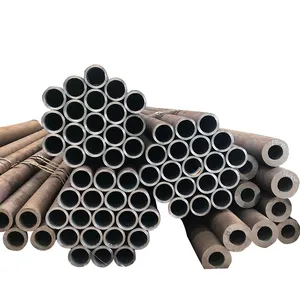A sewage pipe, also known as a sewer line, is a crucial component of any sanitation system. Its primary function is to transport sewage and wastewater from residential, commercial, and industrial areas to treatment plants or designated disposal sites. Designed to withstand the harsh conditions of transporting effluent, sewage pipes play a vital role in maintaining public health and environmental hygiene.
Key features and functions of sewage pipes
Sewage pipes are crafted from robust materials to endure the corrosive nature of wastewater and various environmental factors. This ensures a long lifespan and structural integrity and reduces the need for frequent replacements. Advanced manufacturing techniques and materials contribute to sewage pipes' leak-resistant properties. It not only prevents environmental contamination but also safeguards infrastructure integrity. Efficient sewage systems depend on the smooth flow of wastewater. Sewage pipes are engineered with a streamlined design to minimize obstructions, promoting an uninterrupted flow and preventing blockages. Sewage pipes are often exposed to a variety of chemicals present in wastewater. Also, many modern sewage pipes are designed with ease of maintenance in mind. Access points and inspection chambers are strategically placed, facilitating regular checks and simplifying maintenance tasks.
Materials of sewage pipes
There are different kinds of materials that can be used to make sewage pipes. PVC (polyvinyl chloride) sewage pipes are widely used for their durability, corrosion resistance, and affordability. They are a popular choice for both residential and industrial applications. Known for its strength and flexibility, HDPE (high-density polyethylene) sewage pipes are resistant to chemicals and environmental stress. These pipes are often used in demanding conditions. Cast iron sewage pipes have a long history of reliability. While heavier than some modern alternatives, they offer excellent durability and are resistant to fire. Concrete sewage pipes are valued for their strength and ability to withstand heavy loads. They are commonly used in large-scale municipal projects. Besides the materials listed above, clay sewage pipes are also available.
Common types of sewage pipes
Depending on placement and material properties, there are a variety of sewage pipes. Gravity sewer pipes rely on the force of gravity to transport wastewater. They are cost-effective and suitable for areas with sufficient slope for continuous flow. In areas with challenging topography, pressure sewer pipes use pumps to move wastewater against gravity. This type is ideal for flat or uphill terrains. Combined sewer pipes handle both sanitary sewage and stormwater runoff. They are found in older urban areas and require specialized management to prevent overflow during heavy rainfall. Dedicated to managing rainwater runoff, stormwater pipes are a common type of underground sewage pipes that can prevent flooding by efficiently channeling excess water away from urban areas.











































 浙公网安备 33010002000092号
浙公网安备 33010002000092号 浙B2-20120091-4
浙B2-20120091-4